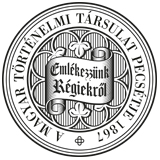Századok – 2016
2016 / 4. szám - KÖZLEMÉNYEK - Kovács Dóra: Az ecsedi udvar. Szervitori hivatás és kapcsolatrendszer Báthory István famíliájában
944 KOVÁCS DÓRA Oszmán Birodalom ellenére is más típusú kapcsolatrendszer működött a szétszakított országrészek közt, a hosszú török háború és a Bocskai-felkelés után bezáródónak tekintett hódoltsági útvonalak ekkor az ó' példájuk szerint még járhatóak voltak. A több ezer misszilisen és a kamarai összeírásokon, kimutatásokon alapuló részletes névkataszter alapján a jövőben már meg lehet kísérelni egy olyan adatbázis felállítását, amely Ecsed 16. század végi vonzáskörzetének társadalmi értelemben is mérvadó összképét fogja mutatni. THE COURT OF ECSED. CLIENTS AND RELATIONS IN THE FAMILY OF ISTVÁN BÁTHORY by Kovács Dóra Abstract István Báthory of Ecsed is a very well-known, but rarely researched figure in Hungarian historiography. He was the last descendant of the Ecsedi branch of the Báthory family, the brother of the notorious Erzsébet Báthory, and from 1601 until his death he was stepfather to Gábor Báthory of Somlyó and his sister, Anna. Báthory’s historical importance is also proven by the fact that he was one of the most influential and richest patrons of the Reformation in Hungary as well as an emblematic figure of the long war with the Ottoman Empire. From 1585 he was ispán of Szabolcs, Szatmár and Somogy counties, and simultaneously judge royal. It is surprising that Báthory’s legacy has only drawn the attention of literary and church historians so far, even though it is obvious even from the current sources that the research of Báthory’s life would enable us to understand important cultural, social and administrational issues in his era. An interesting issue could be the examination of the profession, interpersonal relations and career perspectives of the people who served Báthory. In my paper I examine the concept of familiaritas in courtly life in early modern Hungary. This research is important on at least two accounts. First, the Ecsed court is a unique phenomenon in Hungarian historiography. Second, the research fills a gap in the literature. While there is abundant information about courts in Transylvania, Hungarian noble families in the early modern age are far less well known, and so my study provides a comprehensive picture on Hungarian court life in the sixteenth and seventeenth centuries. I reconstruct the history of István Báthory’s family based on my primary sources, including István Báthory’s detailed testimony. My main goal is to locate Ecsedi Báthory István and determine his importance in his own times by presenting his personnel and household.
